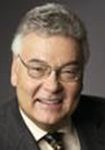 Hartmut H. Malluche, MD
Hartmut H. Malluche, MD
Professor and Chief
Robert G. “Robin” Luke
Chair in Nephrolgoy
Division of Nephrology, Bone and Mineral Metabolism,
University of Kentucky, Lexington, KY
The International Society of Bone Morphometry (ISBM) was founded to provide a formal basis to the efforts started by a small group of pioneers in histomorphometry. The early group comprised Dr Jaworski, Dr Meunier, Dr Jee, Dr Arnold, and Dr Frost.
In 1973, Dr Jaworski described the intention of the group, “In the past two decades morphometric methods, both radiologic and histologic (with quantitative radiography somewhere in between), have proven useful in perfecting the tissue diagnosis of skeletal disorders and an understanding of both the normal and abnormal morphology and histodynamics of bone tissue. The variety of methods and approaches, however, rendered the comparison and the interpretation of the results from various laboratories somewhat difficult. These considerations prompted the workers in the field of bone morphometry to meet… “Since broadly speaking there are two main approaches to the study of the skeleton and bone tissue, by morphometry―histological and radiological―we decided that both these approaches should be represented at the workshop.”
Organized by Dr Jaworski, this first workshop held in Ottawa was a great success. It was followed by eight subsequent workshops organized in 1976 by Dr P. Meunier in Lyon, France; in 1980, by Drs W.S.S. Jee and E.M. Parfitt in Sun Valley, Utah, USA; in 1984 by Dr Melsen in Aarhus, Denmark; in 1988 by Dr H.E. Takahashi in Niigata, Japan; and in 1992 by me in Lexington, Kentucky, USA. At the Lexington meeting we had a record attendance of over 330.
Faced with the challenge of organizing the congress without the backing of a formal organization which could help in raising funds and provide the basis for structured planning and conduct of the meeting, I proposed the idea of starting a not-for-profit organization with the goal of pursuing the interests and plans of the previous workshop organizers. The idea was discussed during the business meeting of the Lexington Congress and the majority of the members enthusiastically adopted the plan. This foundation brought an immediate benefit to the next president, that no personal financial guarantees were needed during the sensitive planning phase. Dr G. Marotti was elected to organize the following international congress and to be the president until the end of the meeting which was held with great success in Sardinia, Italy.
Dr D. Dempster followed Dr Marotti as president; he organized the congress in 1998 in Scottsdale, Arizona, USA. Thereafter, Dr. J.E. Compston was elected to organize the meeting in 2002 in Scotland. Even though there was a somewhat smaller number of participants, the meeting was very informative and continued the legacy of spirited discussions, open exchange, and vivid personal communications.
The bylaws and articles of incorporation are given on this web page. The mission of the ISBM is to establish and promote quality standards and quality assurance control in bone morphometry and to promote the dissemination of new knowledge, new technology, and new approaches to bone morphometry. In the spirit of the early workshops, this is not limited to bone histology and includes radiologic techniques, computer tomography, and any quantitative approaches to describe and diagnose the pathologic changes of bone. Organization of regular meetings is one major vehicle for realization of these goals.
In recent years the field of metabolic bone disease has experienced a great gain in attention, interest, and role in health maintenance. This is at least in part related to the discovery and availability of new therapeutic approaches for the management of metabolic bone diseases. Quantitative evaluation of the abnormalities of bone plays an increasingly important role, not only for research but also the development of new therapeutic agents and establishment of their effects.
This increase in demand for bone histomorphometry and quantitative evaluation of bone functions and bone changes is not met by a commensurate increase in number of new investigators engaged in the field of bone morphometry. To correct this situation is a goal worthy of pursuit by our society. This will require communication between bone laboratories, ongoing quality assurance and continuous updating of quality standards. Here again the ISBM can fulfill an important role in facilitating the exchange between laboratories, including technologies, normal values, research results, and establishment of good quality standards.
In accomplishing these goals it is not the speed that is important but a constant, measured pace. We need the support of industry without becoming dependent on it. It is not the size of the organization that will bring results and success, it is the dedication of its members and their willingness to foster and promote research results leading to medical progress without the burden of overhead often partnered with large organizations.
I wish to thank all of the supporters of our society, foremost the organizers of previous meetings, and our previous and current officers. I hope that the society will attract, through each international meeting, new members. Thanks is also due to our experienced long-term members for their willingness to share their knowledge and wisdom and their dedication to training young individuals who will carry the torch.
Lexington, Kentucky, USA
September 2004
